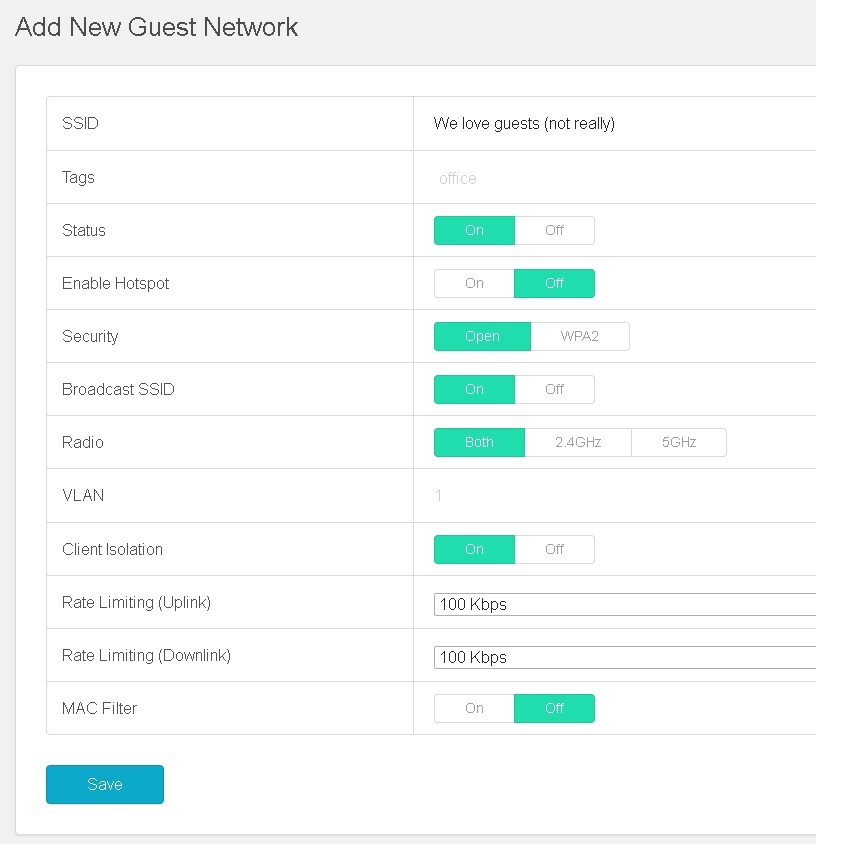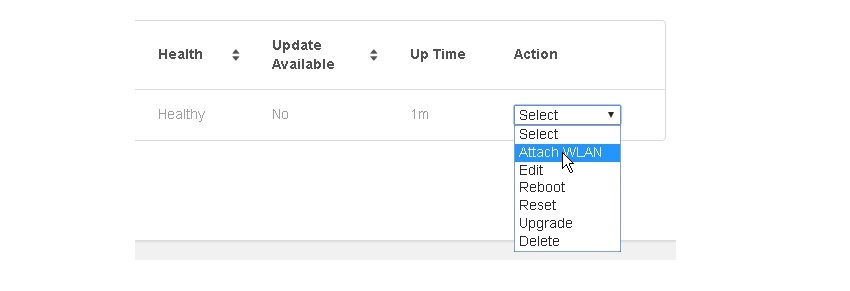What can surprise cloud WiFi? *

* - from the English. exclaim - exclaim, especially in surprise.
We once wrote about Xclaim, a subsidiary of Ruckus Wireless, which produces high-performance, low-cost access points for small offices. Well, we now have some more important news on this product that deserves a separate review post.
This year, Ruckus Wireless itself has its “budget” solution for small offices - Unleashed. It turns out that the Xclaim market niche has become even smaller? Being already locked in a very narrow market loophole, Xclaim positioned itself as simplified access points (hereinafter referred to as APs) for small networks that do not require significant knowledge in the planning and administration of wireless networks for launch and support. We decided to find out when it is better to use and why. Moreover, a new version of the cloud controller for Xclaim has recently been released.
Since the last article about Xclaim, much has changed, and now the points operate under the control of a full-fledged cloud service or in standalone mode. The cloud, of course, is foreign with the corresponding amenities, such as the lack of the need for local backup and availability from any device (iOS, Android, and so on). Access to the cloud controller is completely free, just get a free account on xclaimwireless.com:

I would like to recall that at the same time, Xclaim, unlike equipment manufactured by the same company Ubiquiti, with the introduction of the long-awaited centralized management function, continues to support local administration using the Harmony application or through the local web interface and working in standalone mode when the AP - the commander and the boss herself. Network management from a single point, if the expansion of the network is never planned or simply not necessary in the foreseeable future, the use of cloud controller does not necessarily .
In general, over the year the equipment learned a lot of new things. Under the spoiler, we will try to reduce all the features of this system at the moment into a single table and note what new tricks it turned out to teach a not-so-old dog:
Xclaim and Ruckus Hardware Comparison Chart
* - functions that appeared in the software from version 1.0.0.0.83 to 2.1.0.0.68)
And a host of functions (local subscriber database, L3 roaming, client access to the network according to the assigned policies, guest keys for subscribers, dynamic PSK, gateway Bonjour Gateway, traffic tunneling, ACLs for administrators, ACLs for clients above L2, etc), which are already in the Ruckus AP, but definitely will not appear on Xclaim in the near future. There is also no support for 802.11r (Fast BSS Transition, simplified transition between APs of the same network), 802.11k (transmission by an access point of information to clients about the status of their own radio resources and parameters of neighboring APs), Opportunistic Key Caching (an algorithm that allows the client not to go through the whole procedure again AAA with 802.1x server when moving from one point to another).
A bit of lyrics and explanations of the mechanisms of work on some points.
Thus, Xclaim itself is positioned by the manufacturer as a “simplified Ruckus”, in which there is no abundance of functions designed to control and ensure the security of the wireless network, but in which the configuration and management are significantly simplified, as well as the basic functions that increase the load characteristic of the AP are retained.
| Function | Xclaim | Ruckus |
| Centralized application of WLAN settings * | + | + |
| Isolation of clients of one AP from each other * | + | + |
| Static VLAN per SSID | + | + |
| ChannelFly / AutoChannel | + | + |
| Management of individual locations within a single controller * | + | + |
| Limit the bandwidth "to / from the client" | + | + |
| Distribution of customers in the 2.4 / 5 GHz bands | + | + |
| Airtime fairness | + | + |
| Wispr | - | + |
| Captive Portal * | Integration with third-party portals | Built-in portal, integration with third-party portals |
| 802.1x | RADIUS | RADIUS, AD, LDAP, TACACS |
| Mesh networks | Planned in the third quarter of 2016 | + |
| The number of SSIDs per radio module | 4 | 16 |
| Beamflex | - | + |
| Custom QoS | - | + |
| Balancing customers between APs | - | + |
| Dynamic VLAN Assignment to Clients | - | + |
| Location of subscribers | - | + |
And a host of functions (local subscriber database, L3 roaming, client access to the network according to the assigned policies, guest keys for subscribers, dynamic PSK, gateway Bonjour Gateway, traffic tunneling, ACLs for administrators, ACLs for clients above L2, etc), which are already in the Ruckus AP, but definitely will not appear on Xclaim in the near future. There is also no support for 802.11r (Fast BSS Transition, simplified transition between APs of the same network), 802.11k (transmission by an access point of information to clients about the status of their own radio resources and parameters of neighboring APs), Opportunistic Key Caching (an algorithm that allows the client not to go through the whole procedure again AAA with 802.1x server when moving from one point to another).
A bit of lyrics and explanations of the mechanisms of work on some points.
Xclaim and Ruckus Technologies
Xclaim and Ruckus have the same isolation of clients of the same AP from each other : the ARP frames coming from the clients of APs, in which the IP addresses of other clients of the APs are indicated, are simply reset, and client devices do not receive a response. Since the AP cannot know beyond its “own” limits whether the client is connected with a specific IP address “over the air” or by cable, it is thus impossible to isolate clients of different APs included in the same broadcast domain.
Channelfly- the technology is proprietary, and the mechanism of its operation is explained rather superficially. Briefly, this technology is positioned as a statistical analysis of the bandwidth of each of the channels available on the radio with a given verification period and automatic channel selection in accordance with the forecast, which is made according to the results of this analysis.
The distribution of clients by ranges (can be read as “pushing those who know how to work at 5 GHz into this range”) is implemented quite probabilistically. When trying to associate such a subscriber with a 2.4 GHz radio module, the TD does not respond to several frames, thereby trying to force the client to access the same SSID, but already sent by the 5 GHz radio module. If the client is persistent enough in trying to connect to the “deuce,” then distribution will not occur.
Airtime Fairness is a set of measures aimed at compensating for the problem of a "slow client", that is, a client with a low channel speed, which transfers its "portion" of data to a point for so long that it leaves very little time for other clients of this AP to transfer. This was solved by reducing the transmission window for such clients in time. Yes, the total throughput for a client working on low modulations will be small in this situation, however, all other clients of this AP will transmit their data much faster, and the radio resources of the AP will not be monopolized.
The number of SSIDs per radio modulefor Ruckus includes 4 SSIDs in the 5 GHz band, reserved for MESH, so the total number is 28 per point. For Xclaim, after the appearance of the MESH function, the number of networks is also likely to decrease.
Channelfly- the technology is proprietary, and the mechanism of its operation is explained rather superficially. Briefly, this technology is positioned as a statistical analysis of the bandwidth of each of the channels available on the radio with a given verification period and automatic channel selection in accordance with the forecast, which is made according to the results of this analysis.
The distribution of clients by ranges (can be read as “pushing those who know how to work at 5 GHz into this range”) is implemented quite probabilistically. When trying to associate such a subscriber with a 2.4 GHz radio module, the TD does not respond to several frames, thereby trying to force the client to access the same SSID, but already sent by the 5 GHz radio module. If the client is persistent enough in trying to connect to the “deuce,” then distribution will not occur.
Airtime Fairness is a set of measures aimed at compensating for the problem of a "slow client", that is, a client with a low channel speed, which transfers its "portion" of data to a point for so long that it leaves very little time for other clients of this AP to transfer. This was solved by reducing the transmission window for such clients in time. Yes, the total throughput for a client working on low modulations will be small in this situation, however, all other clients of this AP will transmit their data much faster, and the radio resources of the AP will not be monopolized.
The number of SSIDs per radio modulefor Ruckus includes 4 SSIDs in the 5 GHz band, reserved for MESH, so the total number is 28 per point. For Xclaim, after the appearance of the MESH function, the number of networks is also likely to decrease.
Thus, Xclaim itself is positioned by the manufacturer as a “simplified Ruckus”, in which there is no abundance of functions designed to control and ensure the security of the wireless network, but in which the configuration and management are significantly simplified, as well as the basic functions that increase the load characteristic of the AP are retained.
We continue to launch the network under the control of the controller and log in with its existing data to its web interface:

Now, we indicate what we see when we enter the controller. The web interface is divided into several categories:

And, of course, each of these categories leads to a submenu of configuration tabs for individual parameters and settings blocks:


Of the variety of different options and possible “abuse” of APs, it’s most interesting for us now to show how to connect an AP to a controller and apply the settings of a freshly created wireless network to it. So, we go to the Access Points section, which opens by default on the Register Access Point tab. Fill in the information. As you can see, the AP is associated with the controller’s account by serial number, that is, without access to the Internet, APs cannot work with the controller (which, in principle, is logical, because the management interface of the controller cannot also be raised on the local network):

Pay attention to the Tags field - you can add tags there to help determine the point belongs to different groups, for example, “Moscow, office, 2nd floor” and apply some settings in the future, grouping the points by these tags (we will talk about this later) .
For the convenience of registering points in the system, the ability has been made to load CSV with a list of the necessary TD parameters (in the options you need to select the Add Multiple Aps tab):

Now we see the point connected to the controller:

Time to create a wireless network. Go to the Networks section and select the type of network to be created. We can create a guest network (pay attention to the Hotspot function - when activated, you will need to specify the address of your guest portal page. Since Xclaim does not and will not have a local subscriber database, there will also be no built-in guest portal on it):

We can create the so-called business network (in fact, the difference between them in encryption and AAA modes available for inclusion):

After clicking Save, the created WLANs appear in the general table:

Now you need to bind the wireless networks to the access point (s) and here it comes into play management point groups. Let's return to the list of APs, in which one more is added, indicated by the tag “warehouse”:

Now, when I click on the assigned tag, only the points equipped with this tag will be displayed to me: We

mark this point with a tick (or just a group of selected points) and select the Attach WLAN action in the Action menu:


Now the SSID we selected will be transmitted from this point.
If the address of the cloud controller is available from the point, then the settings are applied almost instantly - the controller informs the AP about the change in the configuration file, which the point immediately downloads and applies. It is important to remember that, for example, when changing the radio parameters, the point restarts the radio modules - accordingly, while losing all connected clients. Moreover, the point also constantly with a frequency of 1 minute informs the controller about the change in its state and sends statistics on the use of the point's resources.
By and large, with the exception of a nice page for monitoring client statistics and the function of generating reports in pdf format for clients, events with APs or both of these sets at the same time, the controller’s functionality is limited by the capabilities listed in this article. Yes, it’s not many hundreds of tunable parameters that you can play with for months, but the equipment itself is sold under the slogan “Wi-Fi for non-IT guys”. Simple, convenient, understandable - hence it has reached its goal. And since the iron sits inside the AP from quite serious Ruckus points, the solution to the task of “distributing Internet in the office” copes with a bang. Is there anything else to expect from him?
